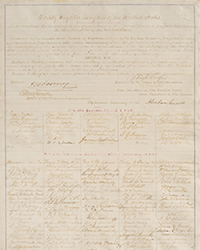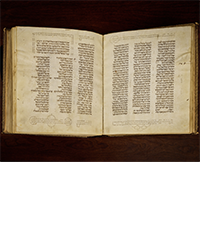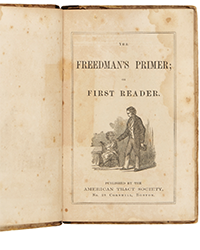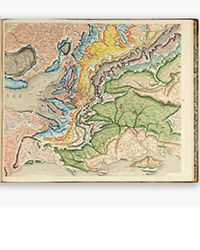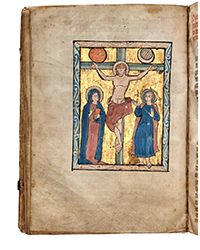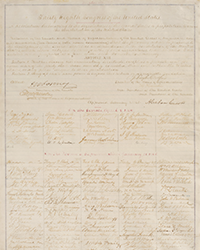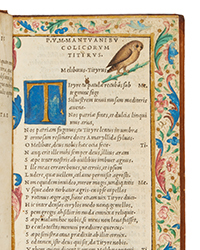Langdon Manor Books has issued their Catalog 21. The best way to describe what you will find is to look at their description of the business: “Specialists in American Social Movements, American Personal Narratives, Photo Albums and Outsider Books.” The catalogue is filled with unusual, uncommon, and unique ephemeral items from America. The concentration is in the twentieth century though some items are older. There isn't a lot of great literature here, but there is much dealing with the lives of everyday Americans in times gone by. You may be one of them. Here are a few.
The 1960s were a time of great upheaval in America, a reckoning with the racial issues that have always divided America and the civil rights movement meant to address the problem. However, this was not a concern for the Pepsi-Cola Company. They just wanted to sell more cola. That was the aim of the material in this promotional kit, directed at the underserved African American market. It contains 18 pieces under a title of Adventures in Negro History, from 1964-1965. In this tense period of race relations in America, black V.P. Harvey C. Russell writes, “The first advice that I can think of offering to a Pepsi-Cola bottler concerning the Negro market is to approach this market on the basis of dollar and cents rather than emotions or prejudices.” Negro sales representatives “should understand that a bottling company is not concerned with racial problems and the racial situation should be considered in a detached and unemotional manner.” The idea was to be inviting to black Americans so they would drink Pepsi while steering clear of all issues that might turn whites against their product. Item 2. Priced at $1,250.
Afghanistan is probably not on the top of your list of tourist spots. It's a strict Islamic state whose rules would not, in particular, appeal to western women. There are strict dress codes that won't reveal much more than the eyes. However, in the pre-Taliban days, it was more appealing to the adventurous traveler. Item 33 includes two Afghan promotional pieces. There is Afghanistan Present and Past from the Afghan Publicity Bureau in 1958. The other is Afghanistan, from the Publicity Section of the Afghan Tourist Organization in 1963. Relations between the United States and Afghanistan were improving in those days while the U.S. provided the nation with aid. President Eisenhower visited the country in 1959. Suggested places to visit include gardens, palaces, ruins, shrines, sites of natural beauty, mausoleums and mosques. Photographs and a folding map are provided. Tourists can experience “all the charm and beauty of its lofty and majestic mountains, its green and picturesque valleys, the warm hospitality of its people and unique sights of its colourful nomadic tribesmen.” Item 33. $950.
This is a brochure for a private school, sort of like those exclusive schools rich people send their children... but not quite. This is a Prospectus of the United States Indian Training School, circa 1909. The school was established in 1897 by the U.S. government. Indian children were forcibly removed from their parents to be trained in the white man's ways. They were forbidden to speak native languages or practicing their traditions. This was a particularly severe school, with forced labor, corporal punishment, and even jail cells and solitary confinement for those who did not shape up. Some 40-50 or more children died there over its 35 years of existence from disease, accidents, or attempted escapes. However, this 28-page piece with stapled rappers promotes the benefits of the school. It notes “the opportunity of seeing the world outside the reservation is of very great educational value to the children.” Features include a farm and orchard, carpentry, cooking and laundry, along with information on academics, athletics and musical training, with choirs “furnished for various occasions in Rapid City.” Item 51. $2,000.
This is a revisionist story of Alice from Kansas, Alice and the Stork. A Fairy Tale for Workingmen's Children. The year was 1915, and working people were not always treated with much respect and dignity then. In this version, Alice is the eight-year-old daughter of a rich landlord. Her “nurse always told her that poor people who cannot buy a house for themselves are lazy and good-for-nothing.” Through a series of dream adventures she learns various lessons, such as one from an American eagle who shows her a land “in which one man makes money out of the life and the happiness of others.” The eagle informs her there are people who “fight alone against the whole world . . . They want all men to be Comrades, and they are trying to make a world where there will be no grindstones to grind money out of the laughter and life of men and women and children.” The author was Henry Thomas Schnittkind, who at times used just Henry Thomas as his name for whatever reason. Item 58. $1,500.
Next is a powerful cabinet card from 1893 featuring a picture commissioned by Henrietta Briggs Wall in time for the Columbian Exposition in Chicago that year. In the center is Frances Willard, a long-time leader of the WCTU and a promoter of woman's suffrage. She is surrounded by the images of four men, representing an idiot, a convict, an insane person, and an Indian, others who did not have the right to vote. The caption reads American Woman and Her Political Peers. On the back, it says, “No one can fail to be impressed by the absurdity of a statutory regulation that places woman in the same legal category with the idiot, the Indian and the insane person.” One can wonder why they were placing the Indian in this category too, but this was 1893. The artist was the talented but obscure Kansas painter W. A. Ford. Item 71. $2,750.
Langdon Manor Books may be reached at 713-443-4697 or Orders@Langdonmanorbooks.com. Their website is found at www.langdonmanorbooks.com.


